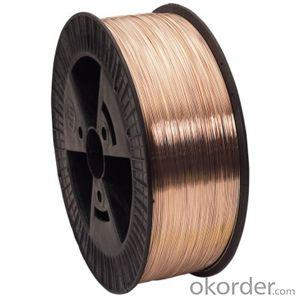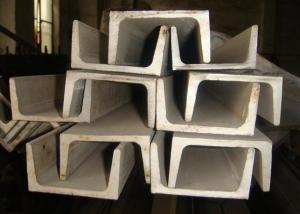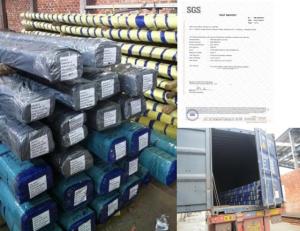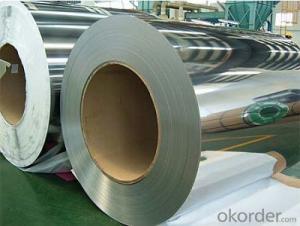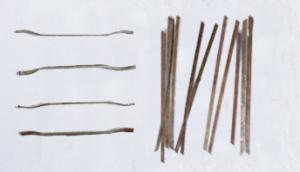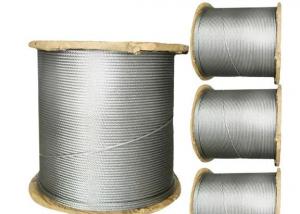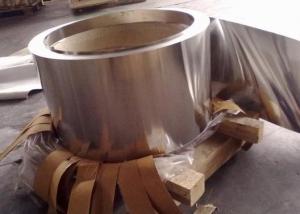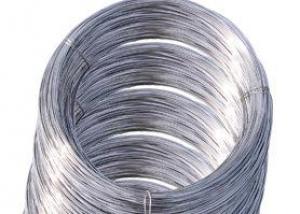welding wire/copper material CO2 gas shielded welding wire ER70S-6
- Loading Port:
- Qingdao
- Payment Terms:
- TT OR LC
- Min Order Qty:
- 10 m.t.
- Supply Capability:
- 1000 m.t./month
OKorder Service Pledge
OKorder Financial Service
You Might Also Like
Specifications
1.copper material CO2 gas shielded welding wire ER70S-6
2.diameter:0.80mm-2.0mm
3.spool weigh:1kg,5kg,15kg,20kg
4.manufacture
Company Profile of copper material CO2 gas shielded welding wire ER70S-6 :
Shandong Luli Steel Co. Ltd, founded in 1993, is a holding company of Luli Group,located in Weifang city, Shandong
province,China. It is a joint steel manufacturer which is combined with sintering, iron smelting, steel-making
and rolled products.Company owns production licenses of deformed bar and round bar and has passed ISO9001
international quality system authentication. Leading products include:
(1)12mm-350mm round bar
(2)6mm-40mm deformed steel bar
(3)0.80mm-2.0mm mig welding wire
Products have been exported to Korea, Japan and Southeast Asia with good reputation.Luli Steel Co., Ltd warmly
welcomes all the customers tovisit factory.If you are interested in our products,pls feel free to contact me.You
could also add me on WHATSAPP or SKYPE to contact in time.Detail contact information as follow:
Marks of copper material CO2 gas shielded welding wire ER70S-6 :
marks | applicable standards/models |
H08A | GB/T 5293 F4A2-H08A |
H08C | GB/T 5293 F4A2-H08A |
H08E | GB/T 5293 F4A2-H08A |
H08MnA | GB/T 5293 F5A2-H08A |
H10Mn2 | GB/T 5293 F4A2-H10Mn2 |
H10MnSi | AWS A5.17 F7A0-EM13K |
H08MnMoA | GB/T 12470 F5A2-H08MnMoA |
H08Mn2MoA | GB/T 12470 F69P2-H08Mn2MoA |
H08Mn2SiA | GB/T 5293 F5A2-H08Mn2SiA |
Chemical composition of copper material CO2 gas shielded welding wire ER70S-6 :
marks | chemical element | |||||||
C | Mn | Si | P | S | Ni | Mo | Ti | |
H08A | 0.07 | 0.40 | 0.021 | 0.014 | 0.011 | 0.008 | ||
H08C | 0.07 | 0.41 | 0.027 | 0.011 | 0.012 | 0.017 | ||
H08E | 0.08 | 0.50 | 0.026 | 0.011 | 0.010 | 0.016 | ||
H08MnA | 0.08 | 0.91 | 0.04 | 0.018 | 0.012 | 0.01 | ||
H10Mn2 | 0.07 | 1.61 | 0.03 | 0.012 | 0.011 | 0.008 | ||
H10MnSi | 0.05 | 0.95 | 0.64 | 0.015 | 0.013 | 0.007 | 0.38 | 0.06 |
H08MnMoA | 0.08 | 1.34 | 0.14 | 0.015 | 0.013 | 0.011 | 0.57 | 0.07 |
H08Mn2MoA | 0.08 | 1.71 | 0.18 | 0.016 | 0.013 | 0.011 | ||
H08Mn2SiA | 0.08 | 1.92 | 0.75 | 0.014 | 0.011 | 0.007 | ||
Mechanical property of copper material CO2 gas shielded welding wire ER70S-6 :
marks | mechanical property | |||
Tensile strength Rm(MPa) | Yield strength Rel or Rp0.2(MPa) | Elongation (%) | Impact energy (J) | |
H08A | 485 | 372 | 29 | 60(-20°C) |
H08C | 555 | 460 | 31 | 87(-20°C) |
H08E | 560 | 470 | 31 | 90(-20°C) |
H08MnA | 501 | 388 | 29 | 68(-20°C) |
H10Mn2 | 512 | 395 | 30 | 69(-20°C) |
H10MnSi | 538 | 427 | 31 | 98(-20°C) |
H08MnMoA | 618 | 495 | 25 | 101(-20°C) |
- Q:What is the maximum temperature stainless steel wire can withstand?
- The maximum temperature that stainless steel wire can withstand depends on the specific grade of stainless steel. Generally, stainless steel wire can withstand temperatures ranging from 550 to 800 degrees Celsius (1022 to 1472 degrees Fahrenheit). However, there are special grades of stainless steel that are specifically designed to withstand higher temperatures. These high-temperature stainless steel wires can endure temperatures up to 1200 degrees Celsius (2192 degrees Fahrenheit). It is important to consult with the manufacturer or reference the specific grade of stainless steel to determine its maximum temperature tolerance.
- Q:What are the different types of stainless steel wire springs used in the agricultural industry?
- In the agricultural industry, stainless steel wire springs are commonly used for various applications due to their corrosion resistance, durability, and strength. There are several different types of stainless steel wire springs that are utilized in this industry: 1. Torsion Springs: Torsion springs are widely used in agricultural machinery and equipment. They are designed to exert torque when twisted or rotated, providing the necessary force for various functions such as opening and closing gates, controlling valves, and operating machinery components. 2. Compression Springs: Compression springs are used in agricultural equipment to absorb and store energy when compressed. They are commonly found in machinery like hay balers, seed drills, and plows, where they provide the necessary force to achieve proper functionality. 3. Extension Springs: Extension springs are employed in agricultural applications where a pulling force is required. These springs are commonly used in equipment like cattle gates, irrigation systems, and packaging machinery, where they provide tension to hold components together or to counterbalance moving parts. 4. Wire Form Springs: Wire form springs are versatile and have various applications in the agricultural industry. They are often used in equipment such as harvesting machines, fencing systems, and animal feeders. Wire form springs can be customized into different shapes and sizes to suit specific requirements. 5. Constant Force Springs: Constant force springs are utilized in the agricultural industry for applications that require a smooth and consistent force over a long extension range. These springs are commonly used in conveyor systems, gate openers, and other automated machinery, where they provide a steady force without fluctuation. Each type of stainless steel wire spring has its own unique characteristics and applications in the agricultural industry. The choice of spring type depends on the specific requirements and demands of the equipment or machinery being used.
- Q:Can stainless steel wire be used for wire mesh panels?
- Wire mesh panels can be made using stainless steel wire. Stainless steel is a versatile material that provides excellent strength, durability, and resistance to corrosion. These characteristics make it suitable for various applications that require wire mesh panels, including fencing, screening, and industrial use. Industries like agriculture, construction, mining, manufacturing, and even decorative purposes commonly utilize stainless steel wire mesh panels. Typically, the stainless steel wire used in these panels is woven or welded to create a sturdy and secure mesh structure. This type of wire mesh panel can endure harsh environments, extreme temperatures, and exposure to chemicals, ensuring reliability and longevity.
- Q:Can stainless steel wire be used in high-temperature applications?
- Indeed, stainless steel wire finds utility in high-temperature scenarios. Renowned for its remarkable resistance to elevated temperatures, stainless steel maintains its strength and integrity even when subjected to extreme heat. With a high melting point, this material retains its mechanical properties at elevated temperatures, rendering it appropriate for diverse high-temperature applications, including furnace components, heat exchangers, exhaust systems, and various industrial processes that entail intense heat. Furthermore, its corrosion resistance and durability further establish stainless steel wire as a dependable option for these challenging environments.
- Q:Can stainless steel wire be used for making kitchen utensils?
- Certainly, kitchen utensils can be made using stainless steel wire. The reason behind stainless steel being a popular choice for kitchen utensils is its ability to resist corrosion, heat, and staining. It is a material that is durable, hygienic, easy to clean, and maintain. Various utensil designs like whisks, spatulas, tongs, and strainers can be created using stainless steel wire, ensuring strength and longevity for these essential kitchen tools. Additionally, stainless steel is non-reactive, meaning it won't interact with food or change its taste, making it a safe and perfect option for cooking and food preparation.
- Q:Is stainless steel wire suitable for wire rope thimbles?
- Yes, stainless steel wire is suitable for wire rope thimbles. Stainless steel offers excellent corrosion resistance and strength, making it an ideal material for wire rope thimbles that are used in heavy-duty applications.
- Q:Can stainless steel wire be used for wire rope swivels?
- Wire rope swivels can indeed utilize stainless steel wire. Stainless steel wire is a favored material option for wire rope swivels because of its exceptional resistance to corrosion, impressive strength, and durability. It is capable of enduring harsh surroundings and is impervious to rust and corrosion, thus making it apt for outdoor and marine use. Moreover, stainless steel wire grants excellent flexibility and tensile strength, guaranteeing dependable performance and effortless utilization. In summary, stainless steel wire is a dependable and fitting selection for wire rope swivels.
- Q:What mould do you use for cold drawn stainless steel wire?. How to deal with before cold drawing?
- Overview of two processes:Hot-rolled (extrusion seamless pipe): billet, heating, perforation, three roll cross rolling, rolling or extrusion, tube to tube diameter (or reducing) - cooling - tube, straightening, pressure test (or testing), marking and warehousing.Cold drawing (rolling) seamless steel pipe: round tube to heating to perforation, annealing, pickling, leading to oil (copper), multi pass drawing (Leng Zha), the blank pipe, heat treatment, straightening, pressure test (testing), marking and warehousing.
- Q:Is stainless steel wire suitable for wire rope railings?
- Yes, stainless steel wire is suitable for wire rope railings. Stainless steel is known for its durability, strength, and corrosion resistance, making it an excellent choice for outdoor applications such as railings. It provides a sleek and modern look while ensuring safety and longevity.
- Q:What are the different wire surface finishes available for stainless steel wire?
- There are several different wire surface finishes available for stainless steel wire, each offering unique characteristics and benefits. Some of the common finishes include: 1. Bright Annealed: This finish involves heating the wire to a high temperature and then rapidly cooling it, resulting in a bright and reflective surface. It provides excellent corrosion resistance and is often used in applications where aesthetics are important, such as jewelry or architectural applications. 2. Pickled: This finish involves immersing the wire in an acid bath to remove any surface impurities or oxides. It leaves the wire with a clean and smooth surface, ideal for applications where cleanliness is crucial, such as medical devices or food processing equipment. 3. Electro-Polished: This finish involves subjecting the wire to an electrolytic process, which removes a thin layer of material from the surface, resulting in a smooth and shiny finish. It provides enhanced corrosion resistance and is commonly used in industries such as pharmaceuticals, semiconductors, and biotechnology. 4. Passivated: This finish involves treating the wire with an oxidizing agent, such as nitric acid, to remove any contaminants and create a protective oxide layer on the surface. It enhances the corrosion resistance of the wire and is often used in marine or outdoor applications. 5. Satin: This finish involves mechanically polishing the wire surface with abrasive materials, resulting in a brushed or satin-like appearance. It provides a decorative finish and is commonly used in furniture, automotive trims, or kitchen appliances. 6. Coated: This finish involves applying a protective coating, such as nylon or PVC, to the surface of the wire. It provides added protection against abrasion, chemicals, or moisture, and is often used in applications where the wire may come into contact with harsh environments or require insulation. These are just a few examples of the different wire surface finishes available for stainless steel wire. The choice of finish depends on the specific application requirements, such as corrosion resistance, aesthetics, cleanliness, or functionality. Consulting with a wire manufacturer or supplier can help determine the most suitable finish for a particular application.
1. Manufacturer Overview |
|
|---|---|
| Location | |
| Year Established | |
| Annual Output Value | |
| Main Markets | |
| Company Certifications | |
2. Manufacturer Certificates |
|
|---|---|
| a) Certification Name | |
| Range | |
| Reference | |
| Validity Period | |
3. Manufacturer Capability |
|
|---|---|
| a)Trade Capacity | |
| Nearest Port | |
| Export Percentage | |
| No.of Employees in Trade Department | |
| Language Spoken: | |
| b)Factory Information | |
| Factory Size: | |
| No. of Production Lines | |
| Contract Manufacturing | |
| Product Price Range | |
Send your message to us
welding wire/copper material CO2 gas shielded welding wire ER70S-6
- Loading Port:
- Qingdao
- Payment Terms:
- TT OR LC
- Min Order Qty:
- 10 m.t.
- Supply Capability:
- 1000 m.t./month
OKorder Service Pledge
OKorder Financial Service
Similar products
New products
Hot products
Hot Searches
Related keywords
